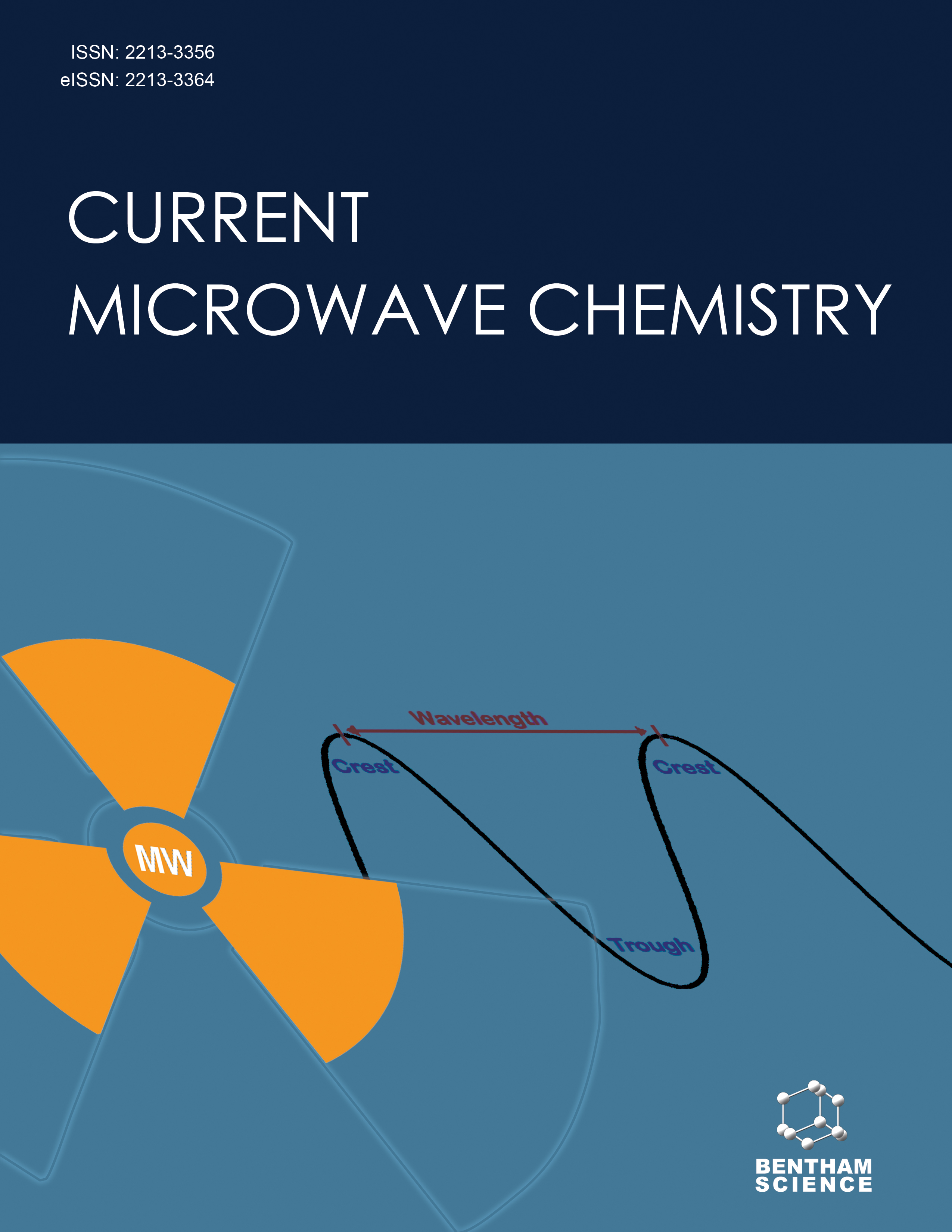-
s A Microwave Accelerated Sustainable Approach for the Synthesis of 2-amino-4H-chromenes Catalysed by WEPPA: A Green Strategy
- Source: Current Microwave Chemistry, Volume 6, Issue 1, Jan 2019, p. 30 - 43
-
- 01 Jan 2019
Abstract
Background: The agricultural wastes as a source offer an excellent alternative to replace many toxic and environmentally hazardous catalysts, due to their least toxicity, ease of biodegradability, and ability to act as a greener catalytic medium. Some of the agro-waste based catalysts reported are BFE, WERSA, WEB, and WEPBA. 2-Amino-4H-chromene derivatives are promising biologically potent heterocyclic compounds, due to their medicinal applications such as antimicrobial, anti-inflammatory, antibacterial, antiviral, anticancer, antidiuretic, anticoagulant and antianaphylactic activities. The present work describes a microwave accelerated, efficient, eco-friendly and economical approach for the synthesis of 2-amino-4H-chromenes through condensation of substituted arylaldehyde, malononitrile and resorcinol/naphthol catalyzed water extract of pomegranate peel ash (WEPPA) under microwave irradiation. The reaction completed within 3-6 min with good to excellent yield of product isolation. The final product isolated by simple filtration and recrystallization gave a spectroscopically pure form of product and did not require further purification. Methods: The pomegranate peel ash water extract as an agro-waste derived catalyst was employed under microwave irradiation for the economical synthesis of 2-amino-4H-chromene derivatives. Results: The reported agro-waste based catalyst was obtained in the absence of external base, additives and solvent-free synthesis of 2-amino-4H-chromene using aryl aldehyde, malononitrile and resorcinol/ naphthol under microwave irradiation. WEPPA acts as a solvent media and catalyst, as it plays a dual role in the synthesis of 2-amino-4H-chromenes. Conclusion: We established an efficient, simple, agro-waste based catalytic approach for the synthesis of 2-amino-4H-chromene derivatives from the condensation of arylaldehyde, malononitrile and resorcinol/α-naphthol/β-naphthol employing WEPPA as an efficient catalyst under microwave synthesis. The method has found to be a greener, economic and eco-friendly approach for the synthesis of chromene scaffolds. The advantages of the present approach are solvent-free, no external metal, chemical base free, short reaction time and isolated product in good to excellent yields. The catalyst is agro-waste derived, which has abundant natural sources available, thus making the present approach a greener one.


